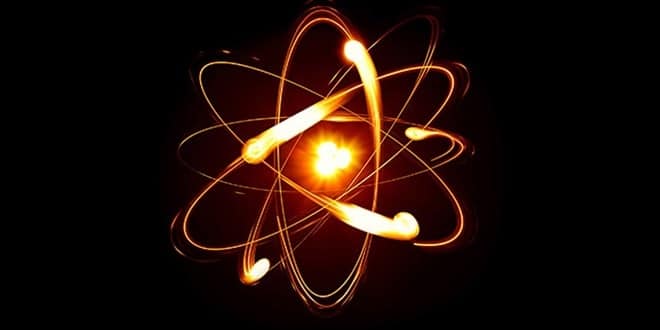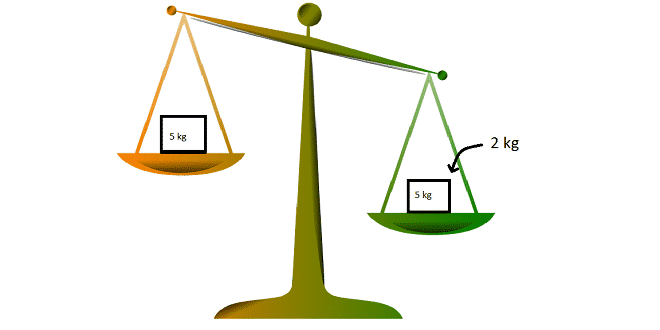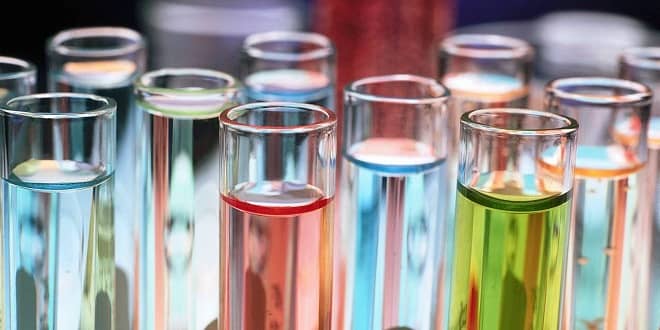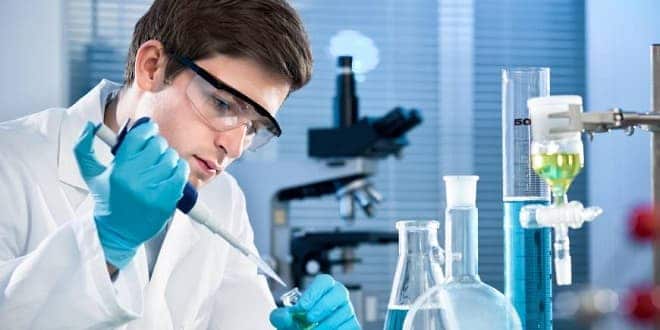Genel Kimya
-

Kimyasal Bağlar I Kovalent Bağ ( Doç.Dr. İbrahim İsmet ÖZTÜRK )
LEWİS NOKTA SİMGELERİ 9.2. KOVALENT BAĞ 9.3.ELEKTRONEGATİFLİK Elektronegatiflik ve Yükseltgenme Basamağı 9.4. LEWİS YAPILARININ YAZILMASI 9.5. FORMAL YÜK VE LEWİS YAPISI 9.6. REZONANS KAVRAMI 9.7. OKTET KURALINDAN SAPMALAR Eksik Oktet Tek elektronlu Moleküller Genişlemiş Oktet 9.8. BAĞ ENERJİSİ Bağ Enerjilerinin Termokimyasal Kullanımı 9.1. LEWİS NOKTA SİMGELERİ Gilbert Lewis tarafından formüllendirilmiş tanımlamaya göre; atomlar çok daha kararlı bir elektron dağılımı oluşturmak için bir araya gelirler. Bir atom, bir soy gazla aynı elektron dağılımına sahip olduğunda, en kararlı dağılıma ulaşır. Atomlar, kimyasal bir bağ oluşturmak için birbirleriyle etkileştiklerinde, yalnızca enen dış kısımları…
-

Kimyasal Bağlar II Molekül Geometrisi ve Atom Orbitallerinin Melezleşmesi ( Yrd.Doç.Dr. İbrahim İsmet ÖZTÜRK )
KİMYASAL BAĞLAR II Molekül Geometrisi ve Atom Orbitallerinin Melezleşmesi Yrd.Doç.Dr. İbrahim İsmet ÖZTÜRK 10.1. MOLEKÜL GEOMETRiSi 10.2. DİPOL MOMENTLER 10.3. ATOM ORBİTALLERİNİN MELEZLEŞMESİ 10.4. İKİLİ VE ÜÇLÜ BAĞ İÇEREN MOLEKÜLLERDE MELEZLEŞME 10.1. MOLEKÜL GEOMETRİSİ Molekül geometrisi , bir moleküldeki atomların üç boyutlu düzenlenmesidir. Kovalent bağ oluşturan elektron çifti sıklıkla bağlayıcı çift olarak adlandırılır. Ancak, çok atomlu bir molekülde farklı bağlayıcı elektron çiftleri arasındaki itme, atomların olabildiğince birbirinden uzak konumlanmalarına neden olur. Sonuçta molekül geometrisi itmeleri en aza indirecek şekilde olmalıdır. MerkezMerkez atomatom etrafındakietrafındaki elektronelektron çiftlerininçiftlerinin geometrikgeometrik düzenidüzeni elektrostatikelektrostatik itmeitme temeline…
-

Kimyasal Denge
KİMYASAL DENGE Kimyasal reaksiyon veren maddeler bir araya getirildiği zaman reaksiyonun olması için ne kadar uzun zaman beklenirse beklensin, deneysel olarak, reaksiyona giren maddelerin tamamının reaksiyon ürününe dönüşmediği bulunmuştur. KİMYASAL DENGE Reaksiyon ilerledikçe girenlerin derişimleri azalır. Ürünlerin derişimleri artar. En sonunda sistem dengeye ulaşır. Sistemdeki derişimlerin değişmediği hale denge hali denir. A2(g) + B2(g) 2AB(g) Bu denklem ileri ya da geri olarak okunabilir. Denge Halinde 1.Denge, sabit sıcaklıkta kapalı sistemlerde geçerlidir. 2.Denge; ileri ve geri reaksiyon hızlarının eşit olduğu durumdur. 3.Denge dinamiktir. 4.Maksimum düzensizlik minimum enerji eğiliminin arasındaki uzlaşmadır. 5.Dengede…
-

Kompleksleşme Titrasyonları ( Prof. Dr. Mustafa DEMİR )
KOMPLEKSLEŞME TİTRASYONLARI Prof. Dr. Mustafa DEMİR http://web.adu.edu.tr/akademik/mdemir/ Kompleks oluşumu Basit bileşik Kompleks bileşik Ligand Şelat Sunucu atom Koordinasyon sayısı Çok dişli kompleks Basit bileşik Basit bileşikler, basit anlamda, elektron kaybeden (katyon) ve elektron fazlalığı olan(anyon) iki türün, bir araya gelmesiyle oluşan nesnelerdir. Elektronların paylaşım derecesine göre bileşikler iyonik veya kovalent karakterde olabilirler. Kompleks bileşik Kompleks bileşikler ise, bileşikler arasındaki etkileşimlerle oluşurlar ve başlangıç maddelerinden çok farklı özelliklere sahiptirler. Basit bileşiklerle kompleksler arasındaki temel fark, birisinin elementlerinden, diğerinin ise bileşiklerden oluşmasıdır. …
-

Laboratory > Acid – Base Titration
An acids-base titration is used to determine the unknown concentration of an acid or base by monitoring its neutralization reaction with a standard of known concentration in the presence of an indicator. For example, a base of unknown concentration may be titrated with an acid standard of known concentration or the reverse. The endpoint is the point of the acid-base titration in which just enough of the standard solution has been added to completely neutralize the solution of unknown concentration. Indicators are used to signal this point of the titration, and are generally selected according to the…
-

Laboratory > Chemical Equilibrium
One useful application of Beer’s Law is to determine the equilibrium constant of a reaction. Reactants (iron (III) and thiocyanate) are mixed in a ratio such that one reactant is presumed to be nearly 100% converted into a colored product. The product is assumed to follow Beer’s Law, and the relationship between relative absorbance and concentration is determined from the first experiment. After that, the reactant originally in excess is reduced in concentration. From the colorimetric determination of product concentration, the concentrations of reactant remaining at equilibrium is determined and…
-

Laboratory > Chemical Kinetics
The detailed explanation at the molecular level how a reaction proceeds is called reaction mechanism. The explanation is given in some elementary steps. Devising reaction mechanisms requires a broad understanding of properties of reactants and products, and this is a skill for matured chemists. However, first year chemistry students are often given a mechanism, and be asked to derive the rate law from the proposed mechanism. The steady-state approximations is a technique for deriving a rate law from the proposed mechanism. …
-

Laboratory > Density of Liquids
ANSWERS: 1. Density is the ratio of the mass of a substance or object to its volume. At any given temperature, the ratio of mass to volume is characteristic for a given substance. a) The density of the liquids does not effect on the pressure. But the temperature effects the density of liquids. An increase in temperature produces an increase in the kinetic energy available to the molecules, enabling them overcome the intermolecular forces to a greater extent and move further apart. This behavior decreases the density of the liquid. b) Liquids cannot be compressed easily.…








